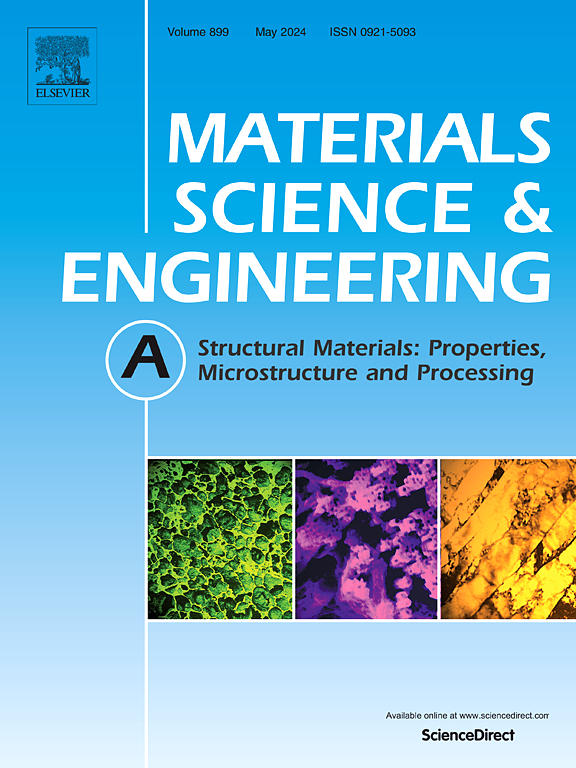通过优化桥梁缺口提高微尺度断裂试验中的裂纹稳定性
IF 6.1
2区 材料科学
Q1 MATERIALS SCIENCE, MULTIDISCIPLINARY
引用次数: 0
摘要
在微悬臂断裂中,在缺口末端有材料韧带的桥梁缺口几何形状有助于减少缺口根部附近的聚焦离子束伪像,从而阻止初始裂纹并促进尖锐自然裂纹的断裂。因此,它显著降低了断裂韧性的统计散点,这是微断裂测试中常见但不希望出现的特征。虽然这个概念已经在模拟和实验中得到了验证,但对最佳几何形状的系统研究仍然缺乏。在本研究中,我们以单晶硅为模型材料,实验考察了桥梁宽度和缺口深度对微悬臂梁断裂韧性的影响。我们发现,具有较薄材料桥和较深缺口的样品在破坏前表现出裂纹止裂,而具有较厚桥梁的样品则没有裂纹止裂,而是表现出明显的增韧。具有优化桥梁缺口几何形状的悬臂梁具有1.09±0.02 MPa m0.5的KIC,这与先前报道的Si(111)表面断裂韧性一致。此外,实验中桥梁几何形状与理想结构之间的差异导致预测和观察到的裂纹止裂缺口要求之间的不匹配。我们的研究结果为设计桥梁缺口几何形状以促进桥梁破坏提供了实用指南,从而改进了微断裂的统计分析。本文章由计算机程序翻译,如有差异,请以英文原文为准。
Enhanced crack stability in micro scale fracture testing via optimized bridge notches
In micro cantilever fracture, a bridge notch geometry with material ligaments at the notch ends helps to reduce focused ion beam artefacts near the notch root by arresting initial cracks and promoting fracture from sharp, natural cracks. Thus, it significantly reduces the statistical scatter in fracture toughness, a common but undesirable feature in micro fracture testing. Although this concept has been validated in simulations and experiments, systematic investigations into the optimal geometry remain lacking. In this study, we experimentally examine the influence of bridge width and notch depth on the fracture toughness of micro cantilevers, using single crystalline silicon as a model material. We found that samples with thinner material bridges and deeper notches exhibit crack arrest before failure, while those with thicker bridges do not show crack arrest instead exhibit apparent toughening. Cantilevers with an optimized bridge notch geometry for crack arrest exhibit a KIC of 1.09 ± 0.02 MPa m0.5, which agrees with previously reported fracture toughness for the Si (111) surface. Additionally, discrepancies between the bridge geometry in the experiment and the ideal structure resulted in a mismatch between the predicted and observed notch requirements for crack arrest. Our findings offer practical guidelines for designing bridge notch geometries to promote bridge failure, thus improving statistical analysis in micro fracture.
求助全文
通过发布文献求助,成功后即可免费获取论文全文。
去求助
来源期刊

Materials Science and Engineering: A
工程技术-材料科学:综合
CiteScore
11.50
自引率
15.60%
发文量
1811
审稿时长
31 days
期刊介绍:
Materials Science and Engineering A provides an international medium for the publication of theoretical and experimental studies related to the load-bearing capacity of materials as influenced by their basic properties, processing history, microstructure and operating environment. Appropriate submissions to Materials Science and Engineering A should include scientific and/or engineering factors which affect the microstructure - strength relationships of materials and report the changes to mechanical behavior.
 求助内容:
求助内容: 应助结果提醒方式:
应助结果提醒方式:


